- An Event Not To Be Forgotten
Digging into Memory
I have been asked to offer some recollections on a special event that our Order experienced at the sunset of the second millennium: the 1992 Extraordinary General Chapter in Mexico.
Calling this event “memorable” is not mere rhetoric. To be honest, it often happens that what deserves to be remembered quickly disappears from memory. We all tend to be “hasty archivists,” that is, we store facts that we later forget, facts and experiences that are significant in themselves, which have made important contributions. In this case, we are referring to the road traveled by our Franciscan Family. We are easily distracted by the pressure of new events and this makes us consider earlier, relevant events in the life of the Order as “ancient history.” I took part in that Chapter myself, and yet it has been a struggle digging into my memory and rediscover what we experienced during that summer of 1992. I must confess that I could not have written very much without the valuable help of the Commentarium Ordinis. Its chronicles in Latin helped me recall that intensive event in Mexico.
Moreover, the number of eyewitnesses of that Chapter is shrinking and those who are still with us may find their memories increasingly clouded by advancing age. Incidentally, I was curious to see how many of the one hundred and thirty-five participants in that Chapter (Capitulars and other friars performing various services) were still alive today. I was unable to make an accurate count. Apart from my own limited memory, all I had at my disposal was the obituary in the appendix of the Order’s latest General Album, which was updated through April 30, 2019. I counted fifty-six friar participants who had passed on. The Lord must have called more to Himself over the last three and a half years.
In the first part of this recollection, I would like to address those who know little about the Chapter, especially those who were children then, or had not even been born, and offer them some information on how the Chapter developed. In a later installment, we will talk more about the content of the Chapter.
An Absolute Novelty
I am not sure who first came up with the idea of holding the Extraordinary General Chapter in Latin America. I was unable to find out if it was a suggestion put forward at the 1989 Ordinary General Chapter, or if it was a proposal that emerged later, within the government of the Order. The fact remains that it was something definitely new. This General Chapter, although not elective, was still a true General Chapter, the 195th in the history of the Order. Celebrating it across the ocean was an absolute novelty. Subsequently, after 2000, many international meetings of the Order were held far from Italy, in places such as Poland, India and Argentina. However, none of these meetings were extraordinary General Chapters. The one held overseas in Mexico was unique.
Obviously, organizing the event was a challenge. Accommodations for many people had to be found, lodgings that were not only suitable as living quarters but also as work spaces. Necessary materials had to be brought in, travel arrangements had to be coordinated so that friars from the five continents arrived and departed at roughly the same time, etc. The commitment shown by so many people was remarkable, starting with the Minister General himself, Friar Lanfranco SERRINI, who was very enthusiastic about the choice of venue. I remember in particular the very hardworking Secretary General of the Order, Friar Cristoforo ZAMBELLI, and the confreres of what was then the Mission in Mexico. The Mission in Mexico was founded by the Province of St. Agatha and St. Lucy in Italy (Sicily). Today, it has become a Province of its own.
The Chapter took place from August 20 to September 15, 1992, at the headquarters of the Episcopal Conference of Mexico, on the northern outskirts of the huge metropolis of Mexico City. The building was modern, with lots of rooms, and, in particular, a large and very functional circular meeting room. The environment was secluded (with controlled access), surrounded by many religious buildings, including the theological seminary of our post-novices in Mexico and the Church of San Francisco de Asís run by our friars. The house was more than respectable; the only problem, which made a big impression on the Capitulars, was the scarcity of food served at meals: no one returned home with extra pounds; a healthy circumstance for Capitulars who needed (but perhaps were not eager) to go on a diet.
It must be said that the missionary friars from Sicily were particularly influential when it came to choosing Mexico.
The Participants
The Chapter was attended by one hundred and twenty-one Capitulars, coming from the five continents, some making very arduous journeys.
According to the Acts of the Chapter, they were grouped into the following categories: Eleven members of the General Curia (Minister General, former Minister General, General Definitors and the General Secretary for Missionary Animation); thirty-six Ministers Provincial; six General Custodes; thirteen Provincial Custodes; thirty-three Chapter Custodes of the Provinces (a figure that has since disappeared); twenty-two Provincial Delegates (belonging to the most populous Provinces): Again, there was a total of one hundred and twenty-one Capitulars. Another thirteen friars, some residing in the nearby Conventual friaries, carried out other tasks, such as serving as members of the Chapter Secretariat, translators, liturgists, press office members, etc.
It may be interesting to note that, of the thirty-six provinces, twenty-eight were European (twelve Italian). Institutionally, the Order still showed a pronouncedly “Eurocentric” face.
Why in Latin America?
Minister General SERRINI explained it in his opening address, saying, “We wanted to have this Extraordinary Chapter in Latin America. We all know the reasons: the evangelization that has been carried out in these lands for the last five hundred years, or more precisely, for the last five hundred years since the so-called “discovery of America” in 1492, and in the last forty-five years since our family’s return.” The Minister General mentioned our first tentative presence in Costa Rica, in 1946, founded by the Province of the Immaculate Conception in the USA, and then in Rio de Janeiro, Brazil, in 1948. Around the same time, friars from the Province of Padua arrived in Brazil, Argentina and Uruguay. When the Minister General talked about our Order’s “return” to Latin America, he was referring to a certain presence we had once established there centuries ago. During the Chapter, there was an interesting report on that topic entitled, “The Presence of the Friars Minor Conventual in the New Indies” (I will mention it in our second installment).
I think one could say that choosing Latin America, a continent and Church in lively interaction, was also dictated by the desire to imbue the life of the Order with a greater impetus for missionary activity, which was developing in those years with various openings. The Order was boldly founding missions, or establishing presences, in many new countries.
Comparing our early presences in Latin American with those of today shows the Order’s path of expansion in that area. It should be noted that at the Chapter in Mexico, there were only two Ministers Provincial and four Provincial Custodes from Latin American Jurisdictions and all of them were natives of the founding Provinces, not of Latin America. The situation today, as everyone knows, is decidedly different.
Choosing Latin America, therefore, was indicative of the Order’s drive to broaden its horizons, embolden its missionary activity and open new frontiers. However, the Minister General was proposing even greater commitment to the growth of the Order, not only on the level of missionary expansion but also in relation to other dimensions: fraternal life, the Franciscan spirit, formation, sensitivity towards the problems of the world, and attention to the signs of the times. In short: a Chapter was called for, together with more dynamic evangelical conversion, a renewal of the Conventual Franciscan charism, and greater attention given to the cultural and ecclesial contexts of our various Conventual presences at that time.
Intensive Activity and a Structured Program
How was the work of the Chapter set up?
It was centered around three themes: “Conventual Franciscan Presence and Witness toward the Year 2000”; “Peace, Justice and the Safeguarding of Creation”; and “The Study of the Franciscan Charism throughout the Various Stages of Formation.” The work was first carried out in coetus, that is, according to geographic-linguistic groups. It continued in the General Assembly where three extensive documents were generated.
This work was preceded by a series of reports, commissioned not only from friars but also from Latin American lay people.
Apart from the actual work of the Chapter, there were several important moments; some of them quite significant. Here are a few:
At the beginning of the Chapter, after the initial formalities, a moving commemoration took place on August 22, in remembrance of the four friars who had been martyred in Latin America: Friar Casimir CYPHER from the Province of St. Bonaventure in the USA, who was killed in Honduras in 1975; Friar Carlos de Dios MURIAS from the “Rioplatense” Province of St. Anthony of Padua in Argentina-Uruguay (not yet founded at that time) who was killed in Argentina in 1976; and Friars Michał TOMASZEK and Zbigniew STRZAŁKOWSKI from the Province of St. Anthony and Bl. James of Strepar in Poland (Cracow) who were killed in Peru in 1991. The last three friars have since been proclaimed Blessed.
The commemoration was attended by three Conventual Franciscan bishops from three dioceses in Brazil: Friar-Bishop Luigi (Amilcare) D’ANDREA, originally from Italy; Friar-Bishop Augustyn (Stefan) JANUSZEWICZ, originally from Poland; and Friar-Bishop Elias James MANNING, originally from the United States. The three bishops stayed on for a good while, talking about their experiences and spending time with the Capitulars. Their presence was a sign that the Order was taking root in the Latin American Church. Today, all three bishops who attended are deceased. However, since then, six more friars have been appointed bishops in Latin America.
Another significant moment was the pilgrimage the Capitulars made to the ancient center of Mexico City to visit the Shrine of the Virgen de Guadalupe, Patroness of Mexico and of all Latin America. During the Mass celebrated there, the entire Order was entrusted to the Virgin, especially the work of the current Chapter. The Minister General said in his homily: “In Mary’s ‘fiat’ is our ‘fiat,’ in her consecration is our consecration.”
There were plenty of visits to significant places to bring us closer to the ancient world of the Mayan people, in particular, an excursion to some of the famous pyramids, not far from Mexico City. Another very interesting experience was our visit to the magnificent anthropological museum in the capital. Actually, the time devoted to sightseeing was rather sobering; we realized we were not on a tourist trip.
We also had an opportunity to fraternally solemnize some events in the life the mission. We participated in a ceremony for postulants being accepted into the novitiate, we attended the profession of simple and solemn vows by some young friars from Mexico, and we took part in the blessing of a new mission church. We also visited the recently constructed monastery of the Urbanist Poor Clares.
Some evenings were dedicated to special and joyful fraternal events: they were evenings organized by each of the various “ceti” [language groups] of the Order.
In recalling General Chapters, one usually recognizes them as special events for taking part in a particular experience of fraternity, one that is placed in the vast horizon of the entire Order. In the case of the Chapter in Mexico, as already mentioned, the Capitulars were “forced” to always remain in the same location. Leaving it to venture to other places would have been problematic, especially considering the difficulty of navigating such a vast metropolis, populated by several million inhabitants. Thus, opportunities to spend time with each other increased.
Experiencing a broadly international fraternity is always a precious treasure. It is an opportunity to open up one’s mind and heart to the variety of friars who make up the great family of our Order.
The final farewell was joyful and sincerely fraternal. As each Capitular departed, the confreres from Sicily and Mexico gave him a large and showy sombrero, which was very welcome, despite the difficulty of finding space for it on the return flight home.
✠ Friar Gianfranco Agostino GARDIN
Treviso, September 27, 2022
(to be continued)






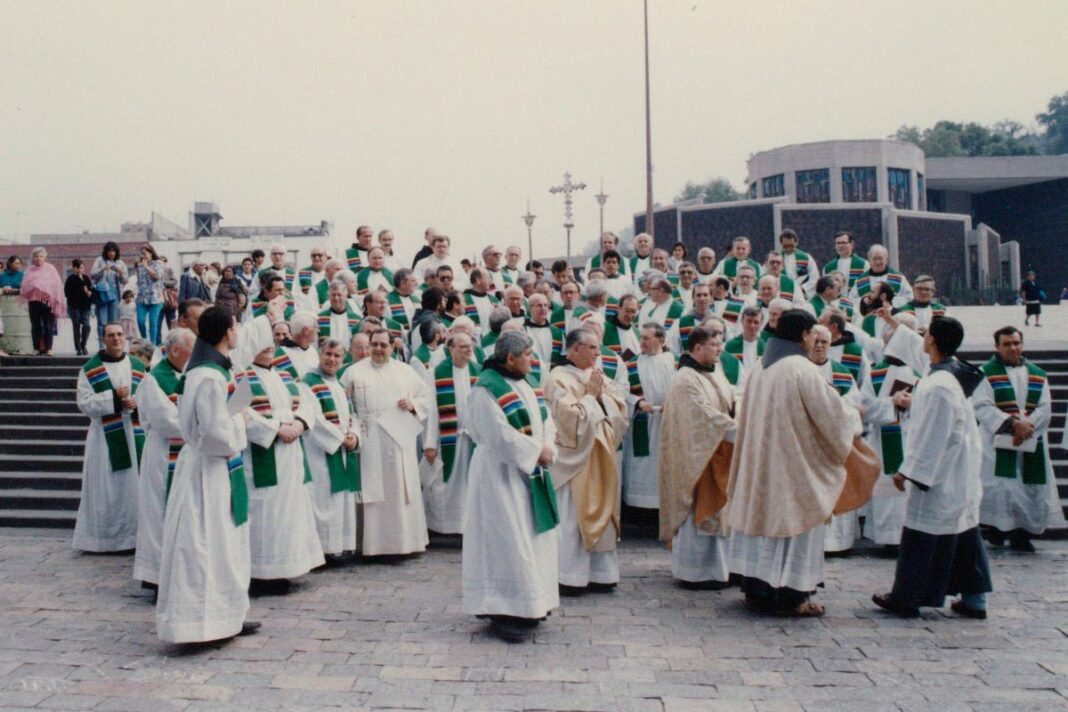
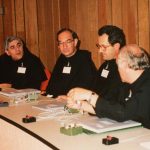
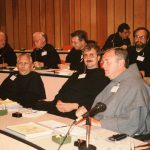
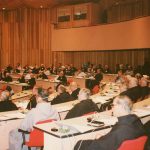
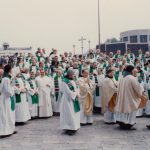
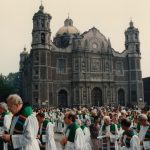
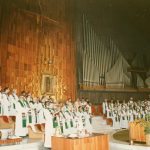
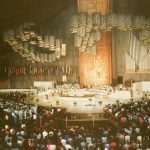
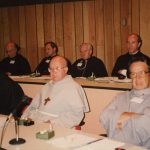
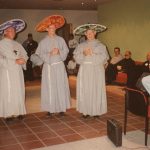
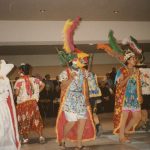
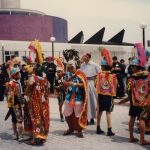
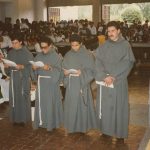
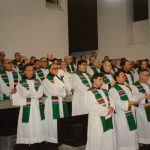
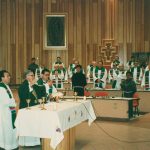
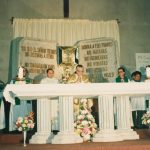
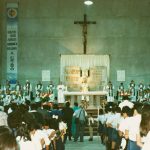
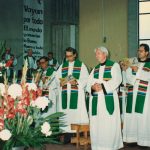
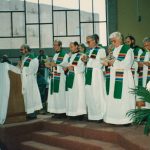
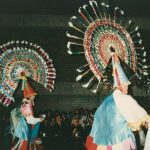
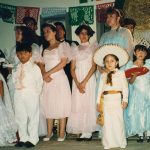
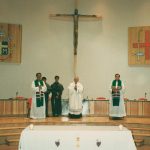
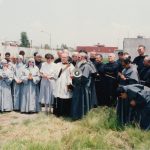
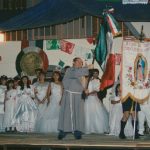

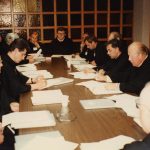



![Interview Regarding Pope Sixtus V [Felice Peretti] (1585-1590) Fra Domenico (Mimmo) CASTIGLIONE](https://www.ofmconv.net/wp-content/uploads/2024/04/d-06-02-24-02-150x150.jpg)



